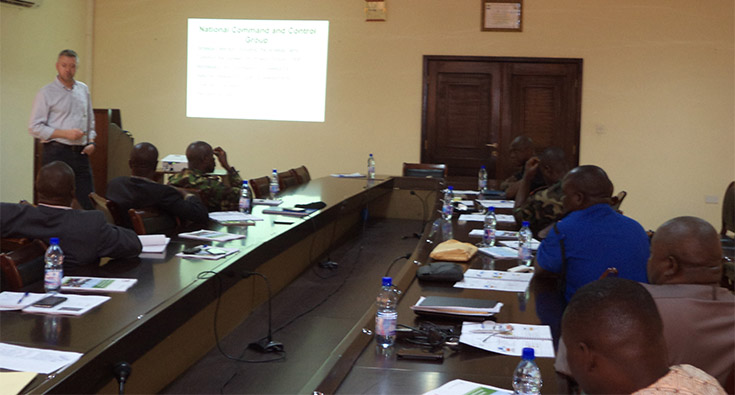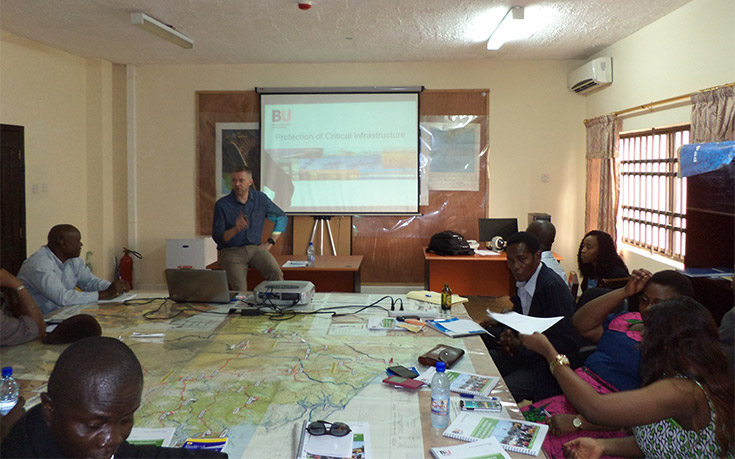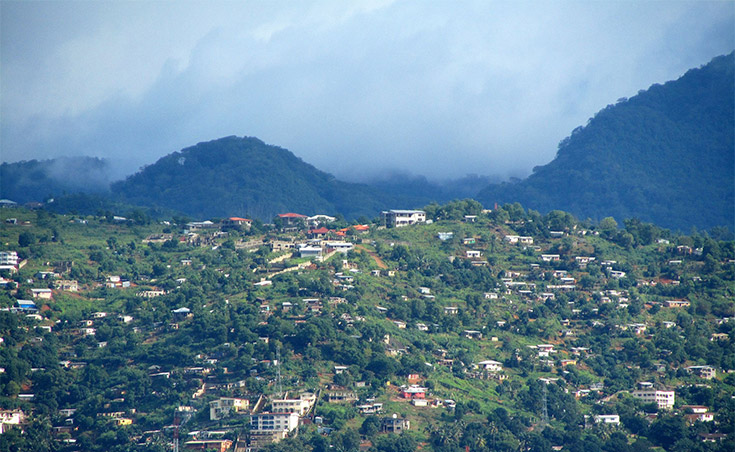Sierra Leone: Planning for a post-Ebola environment
Advisory Panel Member Robert McAlister has been in Sierra Leone as part of a team effort from Bournemouth University Disaster Management Centre to provide senior officer training for the Sierra Leone Office of National Security as it prepares to take up disaster management responsibilities after the Ebola crisis.
This is a challenge for any worldwide disaster management agency, given the global scrutiny associated with the last year’s events.
I delivered a follow-up series of sessions looking at the organisational disaster response structures at all levels, bringing order to the inevitable chaos surrounding a disaster or crisis event. We then moved onto the practicalities of dealing with such events using these models and multiagency response planning.

The opportunity to review how these models could have assisted in the recent major flood response was incredibly powerful learning and having seen this first hand in September, I could give examples of how this could be adopted and address any gaps identified.
We finished by considering risk reduction and setting the scene for the rest of the week’s activities; this day was full of engagement and discussion, which was encouraging. What struck me most was that the team has been through some really testing few years. But its members now have an opportunity to take some vital lessons and confidence from getting through that to build for the future, so they are far more resilient and prepared for anything coming their way.
To put this future into context, the authorities have their fingers crossed that the end of Ebola is in sight, as they pass the 0+25 timeline. This means zero cases beyond 25 days (21 days being the normal period in which cases are confirmed). The national target is 0+90, which will roughly take until Christmas.

But the authorities cannot take their eye off the ball and heath surveillance regimes must be continued, as even now studies regarding EVD viral persistence and advice are changing regarding its ability to hide in the body’s organs and fluids beyond the specified period. The co-ordination of all these activities is monitored at the National Ebola Response Centre (NERC).
Driving back from the training, I realised that the rainy season is coming to a slow end and the colours are starting to emerge, with dark reds and greens of the ground and vegetation. This matches the schoolchildren’s bright uniforms of yellow and pink and their unbelievably white socks given the terrain and roads they navigate. Near the school we pass every day, a selection of street traders are set up outside, evidently entrepreneurs as they sell a range of plastic pens and sandwiches – just what any late-running ill-equipped child needs for the day ahead.

Looking out across Freetown towards the grey blue shimmering sea, a palm tree swaying in my foreground, this really is somewhere that you could imagine as a future tourist destination, not deserving its current negative reputation or stigma attached to historic events.
Robert McAlister, 05/11/2015